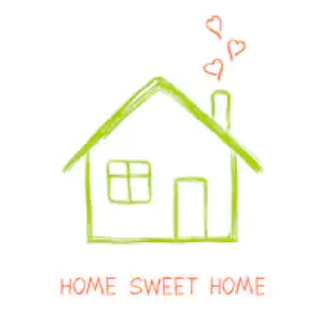Home… Going home… Being home. Those words envelop my soul, and bring a feeling of calm, of exhaling, of comfort, and warmth, and safety. One of my greatest fears, and a fear shared by mid-lifers and older adults I know, is not being able to stay at home until the angels call me/us home.
Gerontologists, researchers, and policymakers have a phrase for this desire to stay in one’s home. We call it aging in place, and more and more we hear about what it means, and what the implications are for losing our ability to stay at home as we get older.
I can sense a quick intake of breath here, and a visceral reaction to the image conjured up in your mind of having to leave your home to live in a nursing facility or retirement community if you really want to stay at home. I feel exactly the same way, which spurs me every day to stay as vibrant as I possibly can to avoid being forced to give up home.
What environmental gerontologists (yes, that’s a special subset of the discipline) find from many recent studies validates what we all feel. One of the first studies to actually ask seniors what they thought about aging in place was done by Dr. Janine Wiles at the University of Auckland.
Dr. Wiles found these folks felt very strongly about wanting to stay in their homes, not so much for the physical structure of their house, but for the ancillary elements of “staying put,” as many called it. Chief among the reasons they want to age in place comes from wanting to be independent, and having control over their environment and their lives as a whole.
In fact, a pivotal study done in the UK decades ago found that the more control workers had—i.e. the higher up they were on the work ladder—the less they experienced the effects of aging because they felt less stressed. Those at the bottom of the ladder, with little control, exhibited the most stress, and aged the fastest.
Dr. Robert Sapolsky in a book I have mentioned before, Why Zebras Don’t Get Ulcers, saw this so clearly in the animal kingdom, as well. Keeping their independence also meant less dependence on family in terms of needing their help with personal care, or being able to stay independent “through” family who step in to provide personal care and support.
Next on the list, the New Zealanders mentioned the connection to social support, including friends and family. Their connections to neighbors and the neighborhoods in which they live were major sources of comfort and feelings of security through familiarity.
Don’t you draw comfort from your neighborhood if you have lived there a long time? My husband often mentions the feeling of ease he has walking our third dog, George, around the block in the evenings. These are the same blocks we have walked with our previous two puppies, for almost thirty years.
Financial benefits came next. When we do the math, it is much cheaper to stay in one’s home, especially since many seniors have almost paid off their mortgages. More than 20% of older adults age 65-74 own their homes outright. This makes staying at home much easier if outside caregivers are needed at some point. Systems of support and one’s family enable seniors in many areas of the country to age in place.
The science also tells us that aging in place slows our memory loss. Staying at home allows us to keep our current social network of friends and familiar places. One of the worst things for our cognition, memory, and spirits is having to leave our homes against our wishes, for any reason.
As a former interior designer, I knew that my home design experience combined with my gerontology experience could bring unique value to aging adults in their own home, which is why I became a Certified Aging in Place Specialist (CAPS)—designers who help retro-fit one’s home with everything one needs to be safe and comfortable. This may include adding ramps, changing out bathrooms fixtures or creating a same floor living space for greater convenience. This allows older adults or those with mobility issues to remain in their home longer than they may have otherwise been able to—exactly what the Gerontologist ordered!
As Dr. Wiles summed up so well, “The friendships, clubs, access to resources, and familiar environments [makes] them feel attached to their communities as ‘insiders,’ ” and just as we knew in high school and beyond, being an insider always feels like coming home.
Until next time…. Be Vibrant!
Living Vibrantly
Like what you see? Subscribe to receive exclusive tips to start living Vibrantly!


